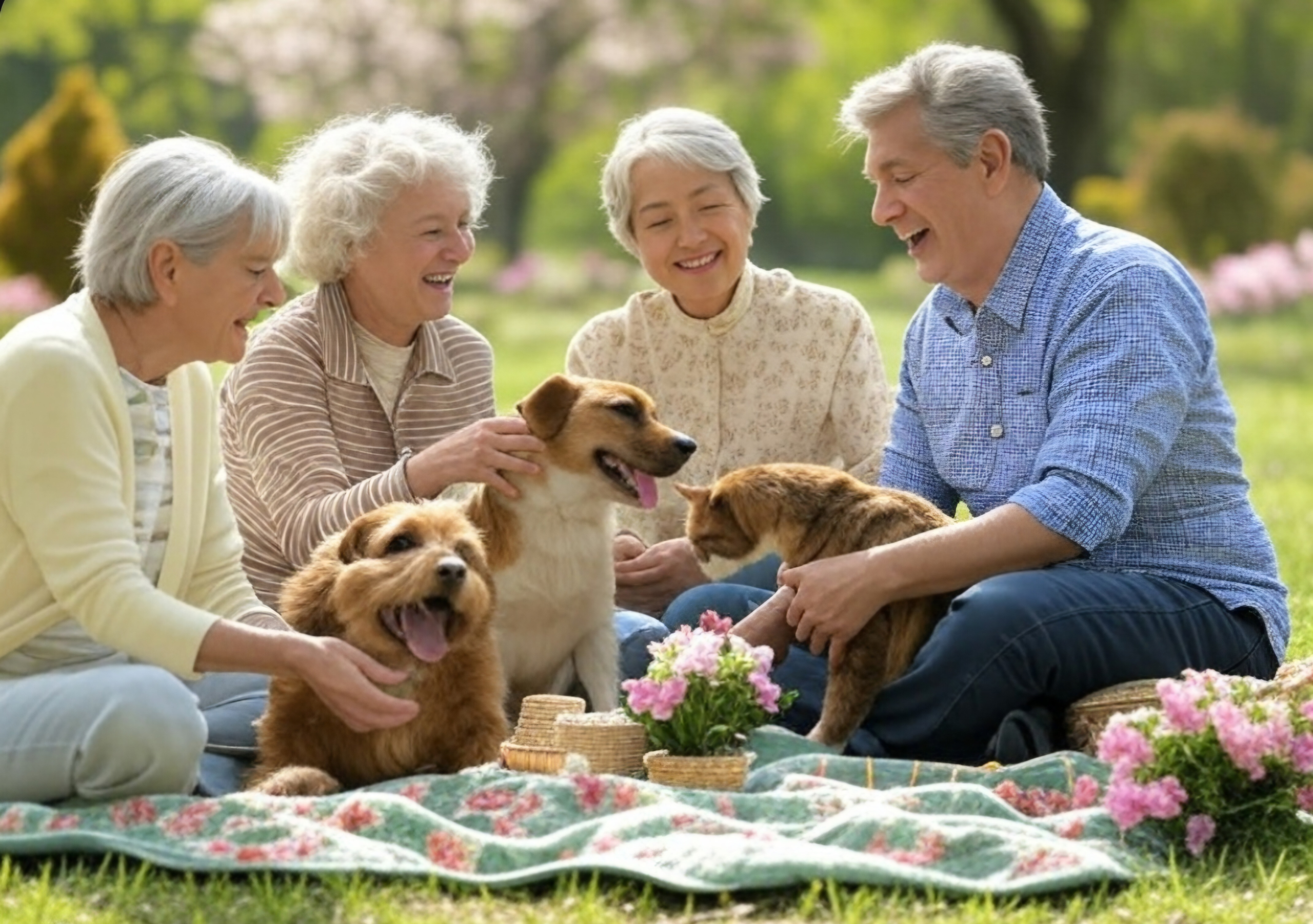
Fun Activities for Seniors During Springtime
March 20th, 2025Elderly Care, Senior Living, Senior Services,
Spring is a season of renewal, blooming flowers, and warmer days—a perfect time for seniors to step outside, engage in meaningful activities, and enjoy the beauty of nature. For caregivers and those involved in elderly care, planning fun, accessible, and enriching activities can enhance seniors’ physical health, mental well-being, and social connections. Whether it’s a solo adventure, a group outing, or a quiet moment at home, springtime offers endless opportunities to create joy. Below, we explore a variety of senior activities tailored to different interests and abilities, ensuring that everyone can embrace the season.
1. Gardening: A Hands-On Connection to Nature
One of the most rewarding springtime activities for seniors is gardening. The act of planting seeds, tending to flowers, or growing fresh herbs engages the senses and provides a sense of accomplishment. For seniors with limited mobility, caregivers can set up raised garden beds or small potted plants on a patio or windowsill. Gardening promotes light physical exercise, improves dexterity, and offers a therapeutic way to reduce stress.
Caregivers can make it a group effort by organizing a community garden day at a senior center or assisted living facility. Pairing seniors with younger volunteers or family members can foster intergenerational bonding. Imagine the delight of watching a seedling sprout into a vibrant flower or harvesting homegrown basil for a spring salad—it’s a simple yet profound joy that connects seniors to the rhythms of the season.
2. Nature Walks and Birdwatching
Spring awakens the natural world, making it an ideal time for seniors to enjoy leisurely walks or birdwatching excursions. A stroll through a local park or nature trail allows seniors to breathe fresh air, soak in sunlight for a natural dose of Vitamin D, and observe blooming trees and chirping birds. Caregivers should choose flat, accessible paths and bring along a lightweight chair or walker if needed.
Birdwatching adds an extra layer of excitement. Equip seniors with binoculars and a simple bird guidebook, and encourage them to identify species like robins, bluebirds, or cardinals, which are especially active in spring. For those who prefer staying close to home, setting up a bird feeder near a window can turn a quiet afternoon into an engaging birdwatching session. This activity stimulates curiosity and provides a low-effort way to stay connected to the outdoors.
3. Spring Picnics with a Twist
A picnic is a classic springtime activity that seniors can enjoy with minimal planning. Caregivers can pack a light meal—think sandwiches, fresh fruit, and iced tea—and head to a shady spot in a park or backyard. To make it special, add a twist like a themed picnic (e.g., a “spring fling” with floral decorations) or live acoustic music from a portable speaker. If mobility is a concern, a picnic can even be held on a porch or in a community room with open windows to let in the spring breeze.
Social interaction is key in elderly care, so invite friends, family, or fellow residents to join. A shared meal outdoors fosters conversation and laughter, lifting spirits and combating loneliness. For an added touch, caregivers can encourage seniors to share springtime memories—like their favorite childhood picnic or a past gardening triumph—turning the event into a storytelling celebration.
4. Arts and Crafts Inspired by Spring
For seniors who enjoy creative pursuits, spring-themed arts and crafts offer a delightful indoor or outdoor activity. Caregivers can organize a session to paint flower pots, create watercolor landscapes, or craft wreaths using faux flowers and ribbons. These projects are adaptable to various skill levels and can be done individually or in a group setting.
One idea is to host a “spring art gallery” where seniors display their creations for peers or family to admire. This boosts confidence and provides a sense of purpose. For those with limited hand strength, try simpler tasks like arranging pressed flowers into a collage or decorating a birdhouse. The vibrant colors and themes of spring—think pastel pinks, yellows, and greens—naturally inspire creativity and brighten any space.
5. Outdoor Games and Light Exercise
Spring’s mild weather is perfect for outdoor games that keep seniors active without overexertion. Classics like bocce ball, croquet, or horseshoes are gentle on the joints and encourage friendly competition. Caregivers can set up a mini-tournament at a senior living facility or park, complete with small prizes like flower seeds or a spring-themed mug.
For a more relaxed option, try chair yoga or tai chi in the backyard or a sunny courtyard. These exercises improve balance, flexibility, and mood, all while allowing seniors to enjoy the fresh air. Pair the session with calming spring sounds—like a playlist of birdsong or flowing water—to enhance the experience. Physical activity is a cornerstone of elderly care, and these lighthearted options make it feel like play rather than work.
6. Springtime Storytelling and Memory Sharing
Spring often evokes nostalgia, making it a wonderful time for seniors to share stories from their past. Caregivers can organize a storytelling circle where participants recount memories of springtime traditions, such as Easter celebrations, May Day dances, or childhood adventures in the rain. Provide prompts like “What’s your favorite spring flower?” or “Tell us about a spring day you’ll never forget” to get the conversation flowing.
For a modern twist, record these stories using a smartphone or tablet to create a digital keepsake for families. Alternatively, turn the tales into a group writing project, compiling them into a spring memory book. This activity not only stimulates the mind but also reinforces seniors’ sense of identity and value within their community.
7. Visiting Farmers’ Markets
A trip to a local farmers’ market is a sensory-rich outing that seniors and caregivers can enjoy together. The vibrant stalls filled with fresh produce, handmade goods, and blooming plants capture the essence of spring. Seniors can pick out ingredients for a meal, select a bouquet of flowers, or simply people-watch while sipping a cool drink.
Caregivers should plan for accessibility—bring a wheelchair or ensure seating is available—and keep the visit short if energy levels are a concern. Back home, turn the market haul into a fun activity, like preparing a spring salad or arranging flowers in a vase. This outing combines social engagement, light exercise, and the joy of seasonal discovery.
8. Music and Dance in the Sunshine
Music has a universal appeal, and spring is the perfect backdrop for a senior-friendly concert or dance party. Caregivers can arrange an outdoor singalong with classic tunes from the seniors’ youth or hire a local musician for a small performance. Add a dance element—whether it’s swaying in a chair or a slow waltz with a partner—to get the blood flowing and spirits soaring.
If an outdoor event isn’t feasible, bring the music indoors near an open window or on a covered porch. Pair it with spring-themed refreshments like lemonade or fruit skewers. Music and movement are powerful tools in elderly care, lifting moods and sparking joy in even the most reserved participants.
Making Spring Memorable for Seniors
Springtime activities for seniors don’t need to be elaborate to be meaningful. The key is tailoring them to individual preferences, abilities, and energy levels, while ensuring caregivers provide support and encouragement. Whether it’s digging in the dirt, listening to birds, or sharing a laugh over a picnic, these moments foster connection—to nature, to others, and to oneself.
For caregivers, these activities are also an opportunity to build trust and companionship with those in their care. Elderly care thrives on patience and creativity, and spring offers a natural canvas to make every day a little brighter. As the flowers bloom and the days lengthen, seniors deserve to experience the season’s magic in ways that uplift their hearts and souls. So, grab a sunhat, step outside, and let the springtime fun begin!
Author: Monika Skiba for Polish Care Services a non medical caregiver agency for seniors.

Embracing Your Empty Nest: Rediscovering Joy and Purpose
July 17th, 2024Polish Care Services, Polish Care Services Trademark, Retirement Plans for Seniors, Senior Living, Senior Services,
Transitioning to an empty nest can be a transformative period in your life. With newfound time and space, it’s the perfect moment to rediscover your passions, hobbies, and goals. Embracing this change allows you to explore new interests and enhance your well-being. Courtesy of Polish Care Services, here are some creative and practical ways to make the most of this exciting phase, ensuring a fulfilling and vibrant next chapter.
Unleash Your Creativity
Learning a creative skill can invigorate your mind and provide a fulfilling way to spend your time. Whether it’s painting, writing, or playing an instrument, creative activities bring immense joy and satisfaction. They offer a chance to express yourself in new ways and discover hidden talents. Joining a local art class or online community can also help you meet new people.
Simplify Your Space
As your children move out, decluttering your home becomes a liberating task. Organizing your documents digitally can significantly reduce clutter. Scan important papers and save them on your computer or cloud storage. Use a PDF splitter tool to manage large files, allowing you to split PDF docs, rename, and share them easily. Consider donating or selling items you no longer need to create a more open and organized space.
Explore New Destinations
Take advantage of your newfound freedom by traveling with friends or your partner. Exploring new places together can strengthen relationships and create unforgettable memories. Whether it’s a weekend getaway or a longer adventure, traveling brings excitement and renewal. Plan trips to desired destinations or explore hidden gems closer to home. Traveling off-season can also offer more affordable and less crowded experiences.
Culinary Adventures
Trying new recipes can add variety to your daily routine. Experimenting with different cuisines and cooking techniques is both fun and rewarding. Cooking new dishes enhances your culinary skills and introduces fresh flavors and healthy options to your diet. Hosting dinner parties or cooking classes for friends can turn this hobby into a social activity. Discovering new ingredients and methods makes every meal an adventure.
Forge New Friendships
Establishing new connections can enrich your social life and provide support during this transition. Join clubs, attend community events, or take classes to meet people with similar interests. Building a new social network helps you feel more engaged and connected in your community. Volunteering for local organizations is another great way to meet people and give back. Developing friendships offers mutual support and understanding.
Secure Your Future
Focusing on financial planning is crucial at this stage. Review your retirement plans, investments, and expenses to ensure you are on track for a comfortable future. Consulting with a financial advisor provides clarity and helps you make informed decisions about your financial goals and security. Consider new investment opportunities to maximize savings. Creating a budget that reflects your lifestyle can effectively manage your finances.
Pursue New Ambitions
Setting new personal goals gives you direction and purpose. Whether it’s learning a new language, writing a book, or achieving a fitness milestone, having goals keeps you motivated and focused. It’s a chance to pursue dreams you may have set aside while raising your children. Regularly revisiting and adjusting your goals keeps you inspired. Celebrating your achievements, no matter how small, boosts your confidence and satisfaction.
Cultivate a Green Thumb
Starting a garden can be a therapeutic and rewarding hobby. Whether you have a large backyard or a small balcony, gardening allows you to connect with nature and enjoy the fruits of your labor. Growing your own vegetables, herbs, or flowers provides a sense of accomplishment and adds beauty to your living space. Gardening offers physical exercise and mental relaxation, and joining a gardening club or workshop enhances your enjoyment.
Embracing this new chapter of life provides a wealth of opportunities for personal growth and fulfillment. By actively engaging in new pursuits, strengthening connections, and focusing on your well-being, you can create a vibrant and satisfying lifestyle. This period of rediscovery is a time to cherish and make the most of every moment, finding purpose in your evolving journey.
Experience top-quality caregiver and cleaning services with Polish Care Services. Visit our site to discover how we can meet your needs with compassion and professionalism, ensuring peace of mind and satisfaction for your loved ones.
Credit: June Duncan

Making Exercise Accessible When You Have a Hidden Disability
June 11th, 2024aging in place, Disability Care, Elderly Care, Senior Services,
Remaining physically active is important for everyone’s overall health and well-being, and it’s especially critical for people with disabilities. The thing is, it can be hard to find a fitness regimen that works when you have a hidden disability. Whether you’re looking for practical things for staying fit in your daily life or ways to establish a healthy morning routine, these tips from Polish Care Services can help you get started.
Seek Help from the Experts
Seeking out a chiropractor if you have a hidden disability can offer numerous benefits and be a potential resource for improved wellness. Chiropractic care focuses on the alignment of the spine and nervous system, which can improve overall body function and reduce pain. For those with hidden disabilities, such as chronic pain, fibromyalgia, or neurological disorders, chiropractic adjustments can enhance mobility, decrease discomfort, and promote a sense of well-being. Additionally, chiropractors often provide personalized treatment plans that address specific needs, offering a holistic approach to managing symptoms and improving quality of life. You can also seek non-medical assistance from the staff at Polish Care Services if there are disabilities that affect daily life and
Staying Fit in Daily Life
If going to the gym or joining a sports team is not a feasible or comfortable option for you, it doesn’t mean that exercise is out of the question. Cleveland Clinic suggests seeing how you can make your home more conducive to your fitness and health goals, whether that means creating a home gym, upgrading your kitchen, or planting a garden.
While it’s important that you know your limits, consider incorporating more movement into your daily routine, as well. Take the stairs more often, park your car further away from your destinations, run errands on foot whenever possible, and stand up and move around every hour if you have a sedentary job.
You could also try practicing yoga or doing chair exercises, which can help improve flexibility and mobility. Or you could take Fido your dog on more walks – just make sure you have a reliable harness to keep him (and others) safe!
Maintaining a Supportive Social Network
Having a good social network is important for anyone trying to establish a fitness routine. But when you have a hidden disability, it’s non-negotiable. Consider joining a sports team, online support group, or fitness class that caters to people with similar struggles. Fitbit notes that this can give you access to invaluable resources, advice, and companionship to aid your journey.
Having a hidden disability doesn’t have to limit your ability to exercise. Incorporate movement into your daily routine, put a morning routine in place, and surround yourself with supportive people. The key is to find what works best for you and your body and to challenge yourself (but not too much). Most importantly, remember to have fun and enjoy the process!
Polish Care Services provides high quality service, compassion and professionalism. Let us know if you have any questions!
Credit: June Duncan
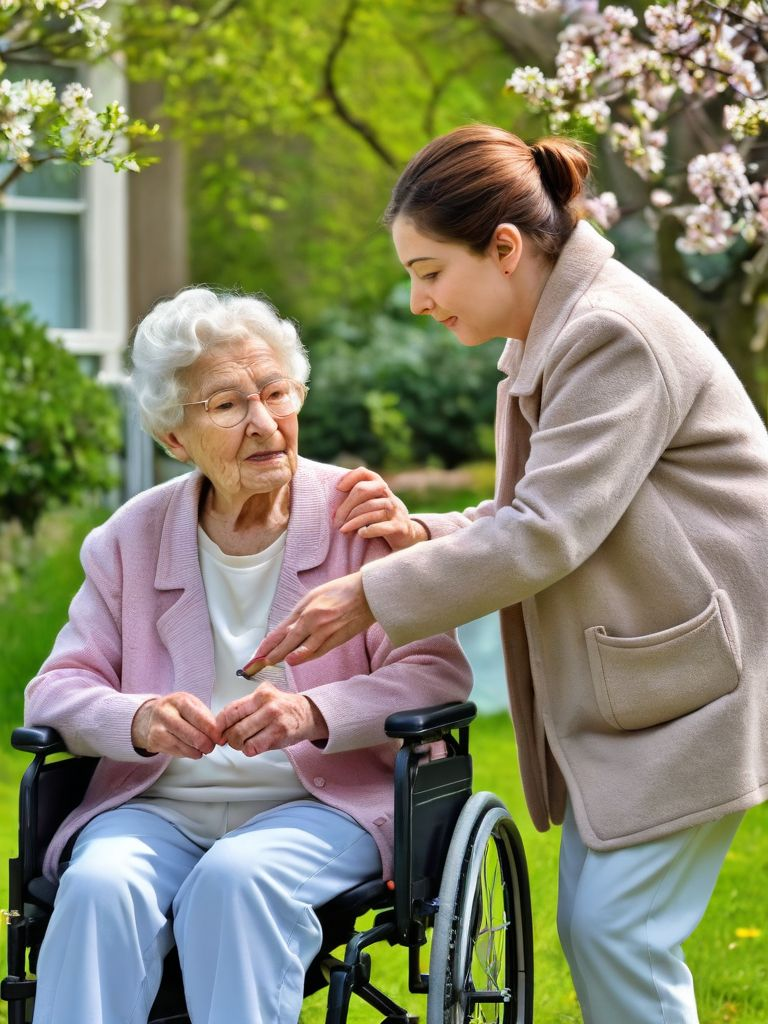
Springtime Activities For Seniors
April 5th, 2024Companion Caregiver, Elderly Care, In Home Care, Senior Services, Spring Activities,
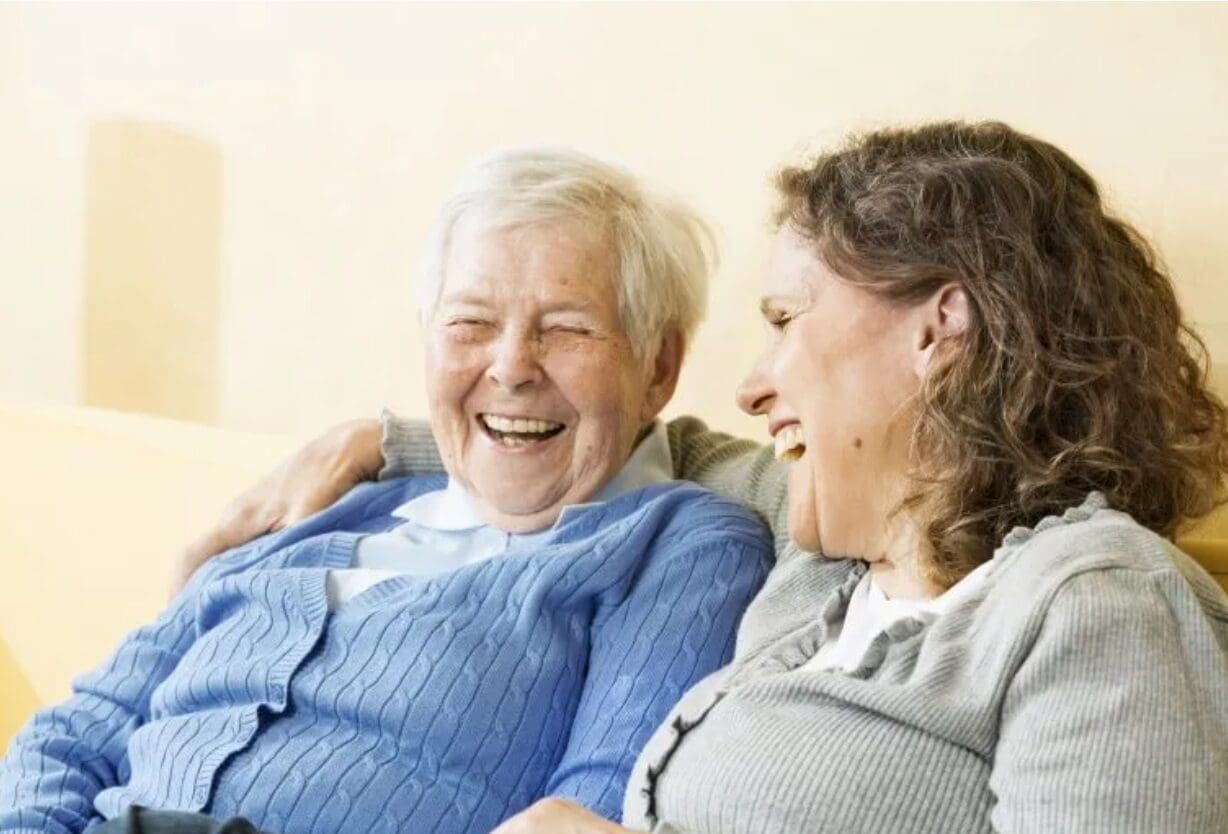
The Healing Power of Compassion and Kindness for the Elderly
January 27th, 2024Elderly Care, In Home Care, Senior Services,

Aging in Place: Transform Homes for Senior Services & Home Care
December 2nd, 2023aging in place, Home Care, Polish Care Services, Senior Services,
As the population continues to age, more and more seniors are expressing their desire to age in place – to remain in the comfort and familiarity of their homes as they grow older. However, to facilitate this, it is crucial to make homes more accessible and adaptable for the unique needs of seniors. By incorporating senior services and home care into the very design and modifications of their homes, we can create spaces that not only meet their current needs but also support their independence, safety, and overall well-being. In this blog, we will explore various strategies and modifications that can transform homes into accessible and senior-friendly environments, promoting comfortable and joyful aging in place.
Assessing Current Needs
To begin the process of making a home more accessible for seniors, a thorough assessment of their specific needs is essential. This can involve consulting with professionals, such as occupational therapists or geriatric care managers, who can provide valuable insights based on their expertise. Understanding the physical, cognitive, and emotional abilities of the seniors will help determine the areas that require modification for improved accessibility.
Ensure Safety and Mobility
Safety should be a top priority when adapting a home for aging in place. Installing sturdy handrails along staircases and in bathrooms, securing loose rugs, and eliminating tripping hazards should be initial steps. Widening doorways and hallways to accommodate mobility aids like walkers or wheelchairs is crucial. Installing non-slip flooring in high-risk areas, such as bathrooms, can significantly reduce the risk of falls. Additionally, well-placed and bright lighting throughout the house is essential for seniors with visual impairments.
Bedroom and Bathroom Modifications
Bedrooms and bathrooms are two areas that require careful consideration when adapting homes for seniors. Bedrooms can be modified by ensuring a comfortable mattress of appropriate height, installing grab bars near the bed, and arranging furniture to allow for unobstructed movement. Adequate lighting and strategically placed nightlights can further enhance safety.
Bathrooms pose specific challenges for seniors due to slippery surfaces and limited maneuverability. Installing grab bars near the toilet, shower, and bathtub can provide much-needed support. A walk-in shower or a seated shower with handheld fixtures can offer convenience and safety. Non-slip mats and contrasting colors to define edges are additional modifications that can make bathrooms safer.
Kitchen and Dining Area Modifications
The kitchen is often the heart of a home, and making it more accessible can empower seniors in their daily routines. Lowering countertops and cabinets, installing pull-out shelves and Lazy Susans, and replacing traditional knobs with lever-style handles can reduce strain and enhance accessibility. Installing appliances at appropriate heights and incorporating tactile markings on dials can also facilitate independent cooking.
In the dining area, potential modifications can include using chairs with armrests for stability, providing ergonomic utensils, and ensuring adequate lighting for ease of dining.
Technological Solutions
Advancements in technology offer exciting opportunities to enhance accessibility for seniors aging in place. Smart home technologies, such as voice-activated assistants and automated lighting systems, can make controlling various aspects of the home easier for seniors with mobility or cognitive challenges. Telehealth devices and wearable monitoring systems enable remote healthcare services, ensuring timely interventions in case of emergencies.
Conclusion
Creating homes that are more accessible for seniors is not only about physical modifications but also about promoting emotional well-being and independence. By incorporating senior services and home care into the very fabric of the home, we can empower seniors to live fulfilling lives in their cherished spaces. From assessing current needs to ensuring safety, mobility, and comfort, modifications such as widening doorways, installing grab bars, and incorporating technological solutions can significantly improve the quality of life for seniors aging in place. As society continues to recognize the importance of elderly individuals’ active participation, it is our responsibility to create inclusive environments that allow them to thrive gracefully. Let us embrace the concept of aging in place and strive to make every home a sanctuary where senior citizens can find solace, security, and lasting happiness.
Credit: Kasia Sutkowski for Polish Care Services Senior Services Division
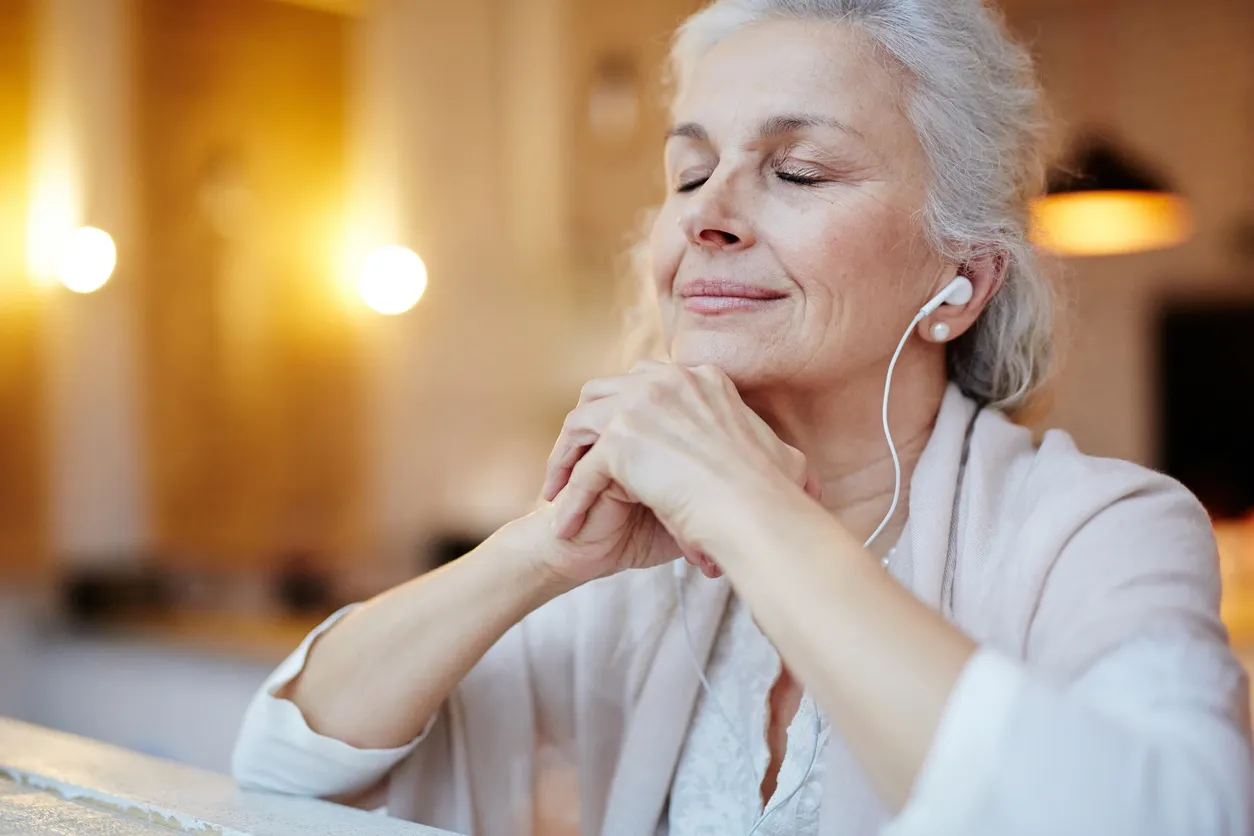
Caring for Seniors: Music and Health Benefits for Seniors
December 15th, 2020Caregiver Employment, Caregiver Service, Preparing for the Holiday, Retirement Plans for Seniors, Senior Living, Senior Services, Seniors, Uncategorized,
Caring for Seniors: Music and Health Benefits for Seniors
Music is beneficial for everyone. There’s always a song that makes each person that hears it feel something. But for seniors suffering from Alzheimer’s or dementia, it is especially beneficial. It allows them to access parts of their mind that might be unreachable otherwise. Here’s how music helps seniors when they need it the most.
What Music Therapy Does
Music therapy is part of what some experts refer to as entertainment. When people start to listen to music, it allows them to focus on it and feel more relaxed. This facilitates better physical and emotional processing so that everything from medications to feeling emotions is more effective. It’s used in care settings to help bring about change for therapeutic reasons, spiritual ones, or emotional ones.
This is why music therapy is used in a wide variety of care settings including long term care communities, rehab centers, hospice, and in home senior care. It helps people manage conditions like chronic pain and Alzheimer’s disease. In Finland, doctors studying its effects found that survivors of a stroke who listened to music every day improved their auditory memory, mood, verbal memory, and focus.
How Music Therapy Helps Seniors with Dementia and Alzheimer’s
Melody has a profound effect on people with Alzheimer’s and dementia and it is like a medicine for seniors with these conditions. Some studies have shown increased eye contact, communication, and happiness. It’s also shown that elderly people are less fatigued and that music helps regulate sleep, due to higher melatonin levels, if music is listened to regularly. Seniors are more likely to walk further when exercising and keep a better pace as well.
For those in the later stages of the disease, music therapy has shown to decrease stress and agitation while increasing relaxation and responses.
Caregiver Benefits from This Therapy
Caregivers also benefit from music therapy. Listening to songs with seniors who have Alzheimer’s or dementia helps lighten the mood. Plus it creates a connection with the client or loved one and helps the two communicate without needing to use words. Caregivers can use music to make the daily routine they go through with clients or loved ones easier by creating a connection. Most importantly, music helps improve the bond between caregiver and elder that can fray due to stress.
If you or someone you know need help caring for an elder with Alzheimer’s or dementia, contact Polish Care Services. Our team of care experts will be happy to help match you with a caregiver who meets your needs.

Caring for Seniors: Preventing the Spread of COVID-19 During Cold
September 28th, 2020aging in place, Caregiver Service, Companion Caregiver, Companion Senior Care, Dementia Care, Disability Care, Elderly Care, Fall Activities for Seniors, Long Term Care, Meditation, Senior Living, Senior Services, Seniors, Spring Activities,
COVID-19 is here to stay for the foreseeable future, until there is an effective and safe vaccine. As the pandemic considers, it’s time to start thinking about how to keep seniors safe during long term care as we head into the colder months. Here is what to keep in mind when it comes to preventing the spread of COVID-19.
Covering Your Bases: Basic COVID-19 Spread Prevention
It is best to reinforce what is already known, wear a mask over your nose and mouth at all times when outside the house and encourage everyone you live with to do the same. Keep one in your car or bag if you accidentally leave it behind. Wash your hands frequently with soap and water for at least 20 seconds. Keep six feet of distance between yourself and others when outside the home. Avoid large gatherings with friends, and groups and observe social distancing and mask-wearing precautions if you do. Do not touch your face and monitor your health daily by going through the common symptoms. Stay home if you feel ill.
What to Do in the Fall
Flu shots are available starting in September. Experts recommend getting one starting in October so that it lasts for the entire season. Arrange for your elderly loved one to get one as well. Some medical providers or services may come to the house to give one for a fee if your loved one or client doesn’t already have home health care nurses seeing them.
How to Care For Clients or Loved Ones at Home During the Colder Months
Preventing the spread of COVID-19 during fall, winter, and spring relies upon following many of the same basic precautions for in home senior care. Both the care provider and the elderly person should be wearing masks while the care provider is in close proximity. Minimize indoor conversation and stay six feet away from any other family members or pets in the house. Minimize conversations indoors and clean surfaces touched as you go. If possible, increase ventilation indoors without making the room too cold. Encourage others in the home to clean surfaces after you leave as well.
If you have supplies such as gloves, masks, or hand sanitizer, keep the supplies in a sealed container in the home to use only when you’re there.
Finding a trusted care provider to help your loved one is a challenge. Polish Care Services will answer the call. Reach out to us to learn how our caregivers help the elderly receive quality in-home care.
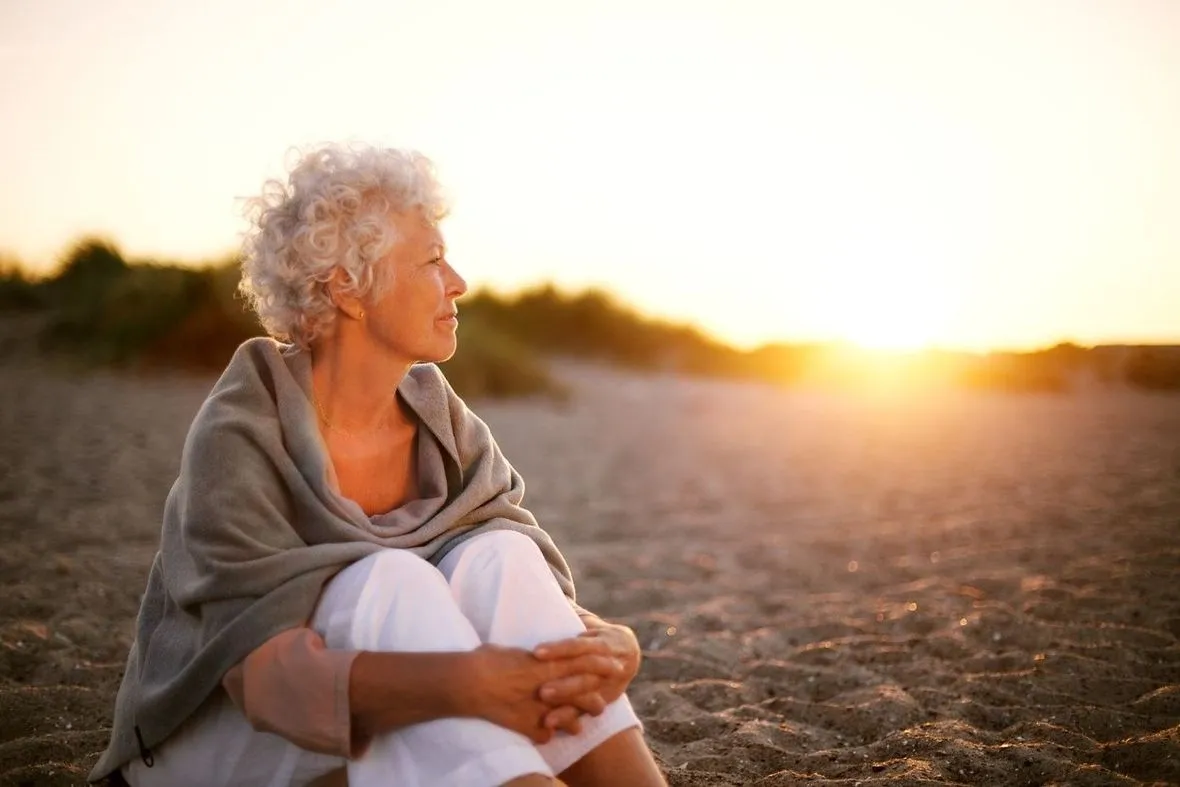
Caring for Seniors: Caring for Seniors During Changing Seasons
September 7th, 2020aging in place, Alzheimer's Care, Caregiver Service, Companion Caregiver, Companion Senior Care, Home Care, In Home Care, Preparing for the Holiday, Retirement Plans for Seniors, Senior Care Services, Senior Living, Senior Services, Seniors, Summer Activities for Seniors, Uncategorized,
As we head into another time of the year, start thinking about long term care for seniors at home during each season. Every time of the year has unique challenges for the elderly population. Keep reading to learn how to care for seniors during season change such as autumn, winter, spring, and summer.
Care During Autumn
Autumn is the season to prepare in-home care clients for the winter ahead. The flu season officially begins in October. So start asking your client’s family or nurse to arrange for a flu vaccine in September or early October. Go through the client’s over-the-counter medicines and get rid of any cold-related medication or supplies that have expired. Replace the expired supplies and stock up on other things like tissues, cough drops, and nose spray if applicable.
Fill the pantry with cans of healthy soups and find recipes for warm dishes that can be put in the crockpot for easy meals. Fix any drafty spots in the house.
Don’t forget to go through existing cold weather clothes and replace anything that’s no longer wearable. Make sure the client has enough socks, sweaters, warm pajamas, and blankets to keep them cozy.
Care During Winter
Winter is the coldest time of year and can present the most risk to seniors at home with increased fall risks and household risks. One of the most important steps to take is to prepare the home for winter. Caregivers should notify the client or their family of any potential hazards around the home such as a lack of fire extinguishers around the fireplace, stairs that present a fall hazard when wet, or carbon monoxide detectors in need of batteries.
Make up an emergency kit with a flashlight, warm blankets, a radio, backup batteries, water, and nonperishable food to last for several days in case in-home visits cannot be made. Install non-slip mats under rugs and in any room where the client may slip and fall. Keep shoes on mats inside the house to keep puddles from forming on the floor if they’re wet. Finally, keep areas well-lighted as it gets dark to prevent clients from falling over objects.
Care During Spring
Spring is a season of fresh starts and is a time for caregivers providing in-home senior care to reassess things in the home. Examples of this include making sure that the medication list for the client is current and has all prescribed medications as well as vitamins or supplements. Any expired or discontinued medications should put in a separate location until a family member or client’s home care nurse can look at them or disposed of if possible.
Evaluate the rooms used by the client for any repairs or improvements to be made. Consider installing grab bars and non-slip mats in the bathroom, putting appliances and dishes within easy reach in the kitchen, and installing a nightlight in the bedroom. Move clothes and grooming items within reach for the client to use and make sure they can reach the phone or medic-alert devices from the bed.
Lastly, secure cords out of the way and get rid of clutter in the home that presents an ambulation hazard.
Care During Summer
When the weather begins to heat up, seniors face new challenges. Heat can put added stress and pressure on the elderly. It’s best to keep them cool and indoors. Avoid any strenuous activities. If the client wants to do a physical activity like take a walk, it’s best to do it early in the morning while it’s still cool. Keep them hydrated throughout the day with water and avoid drinks with alcohol or caffeine in it. Encourage wearing light layers and keep the home cool by running a fan or using solar curtains.
Prepare meals that are light and healthy like salads and avoid heavy meals. Stock up on popsicles or other frozen items that help keep clients hydrated and cool. Offer a cool shower or bath to help beat the heat and use a cool washcloth on the back of the neck when sitting to help alleviate feeling hot.
If the client wants to go out, go to places with air conditioning like a library, coffee shop, or mall.
Every season has its care benefits and care challenges. The most important thing to remember is to prepare in advance. The more prepared a caregiver is for each season, the less stressful it will be for the senior. If you’re looking for a thoughtful and prepared caregiver, contact Polish Care Services. Our staff will be happy to match our caregivers to your loved ones.

Caring for Seniors: Managing Finances
July 28th, 2020Caregiver Employment, Caregiver job, Caregiver Service, Companion Caregiver, Companion Senior Care, Disability Care, Hire CNA, In Home Care, in home care assistance, Long Term Care, Outdoor Activities for Seniors, Polish Care Services, Senior Living, Senior Services, Seniors, Spring Activities,
Caring for Seniors: Managing Finances
Care is an expensive part of getting older. Everyone will need some type of long term care in their senior years. This knowledge does not make planning for these financial eventualities any easier. Long-term care insurance is one option that helps with the cost of care as people age. This article provides an overview of what this insurance option is and what it covers.
What is Long-Term Care Insurance?
Long-term care insurance covers services that help seniors as they get older. It helps with the cost of having assistance for activities of daily living or ADLs such as bathing, dressing, and transferring. Traditional health insurance doesn’t cover such costs. This insurance can cover:
– In-Home Care
– Home Health Aides
– Care at an Assisted Living Facility
– Care in a Nursing Home
Long-term care insurance is an option that some seniors choose because they may not want to use a loan, property sale, or to depend on family to help out if care is needed.
The Benefits of Long-Term Care Insurance
Long-term care insurance can help pay for in-home senior care and seniors can stay at home longer. The insurance will typically begin covering services when assistance is needed with two or more ADLs. Because it covers in-home care, a senior can have caregivers come into their home and help them with ADLs along with things like cooking and cleaning.
The costs of moving to assisted living or to a nursing home has a monthly rate starting at $6,000 on average excluding the cost of medical care. If you are a senior in need of care, the cost is typically less expensive to stay at home with care.
What to Keep in Mind About Long-Term Care Insurance
The best time to buy long-term care insurance is between the ages of 50 and 65. Waiting longer may mean an increase in cost, especially for those with an existing condition. Insurance premiums are not cheap but for those who can’t afford care out-of-pocket and are not considered low-income, long-term care insurance is something to think carefully about.
If you’re in need of in-home senior care, reach out to the staff of Polish Care Services 860-255-8278 or care@polishcareservices.com. We can help walk you and your family through the options for in-home senior care.
